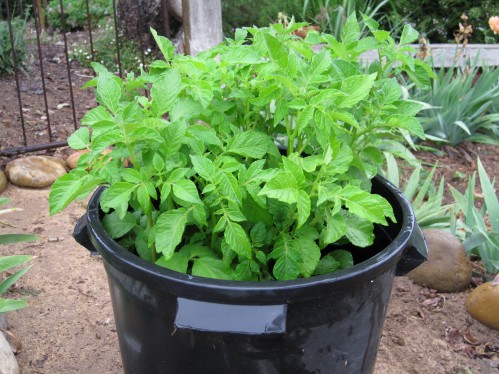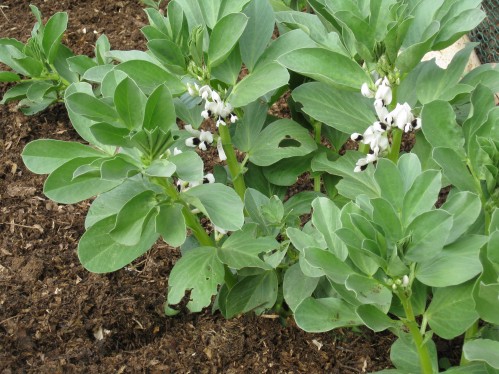 Early last summer on a trip to Napa Valley with my garden friends, we all bought German Butterball potato seed starts to take home and grow in our own gardens. German Butterball potatoes are posh to potato growers and fancy chefs for their unique golden color, natural buttery taste, flaky texture, and easy storage. It was a challenge I had to try.
Early last summer on a trip to Napa Valley with my garden friends, we all bought German Butterball potato seed starts to take home and grow in our own gardens. German Butterball potatoes are posh to potato growers and fancy chefs for their unique golden color, natural buttery taste, flaky texture, and easy storage. It was a challenge I had to try.
You can grow potatoes in the ground, but try growing them in a container, for more control and convenience.
How To Grow Potatoes In A Container:
1) Start with a container that is 20" to 30" tall with drainage. It can be a plastic nursery container like the one I used, or a plastic trash can, half wine barrel, etc.
If you do use old containers, be sure to clean, scrub, and rinse well your container. Use a one part bleach to five parts water mixture to sanitize your container against disease, fungus, and whatever was previously in your container. Never use a container that had been used for chemicals or pesticides previously.
2) Fill your container with several inches of loose clean organic soil mixed with peat moss.
3) Before planting, I left my German Potato seed starts in a cool dry area for a few weeks to develop nice eyes. Place your ready potato seed starts in your container several inches deep in your container.
4) Seed potatoes are best bought in late winter or early spring, either from your favorite nursery or seed catalogs like Seed Savers Exchange or Territorial Seed. Always use certified, disease-free potato seeds about the size of a chicken egg. You might be disappointed if you use store bought potatoes which have sprouted eyes for yield and diseases reasons.
5) Your potato starts will start to grow, and when they have about 6-8 inches of foliage, add more of your soil mix covering again 1/2 of your stems and foliage. Repeat this every time you see a burst of new growth with your foliage. Each time you add your soil mixture, top feed your potato plants with 1/2 cup of cotton seed meal or your favorite liquid fertilizer. By doing this you encourage your potato plants to flower. Once they flower, stop fertilizing them.
6) Keep your potato plants moist in their container, but not soggy. Always have them in full sun. During your growing process, you can poke around for your potatoes and dig up a few to look at your progress.
7) After your plants stop flowering and their foliage begins turning yellow, your potatoes are reaching maturity and their full size. At this point, stop watering, and let the foliage tops die back. Let your potatoes cure in their soil for a few weeks. Dig up your potatoes out by hand to harvest.
Garden-fresh potatoes delight your taste buds. Use your favorite potato recipe, and wow your family and friends.
I love to roast mine in the oven with a little olive oil, smoked sea salt, and freshly ground pepper. Yum.
Please share if you grow potatoes in your garden or in a container. Please share which potato favorites you like to grow.

